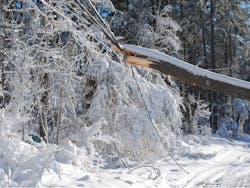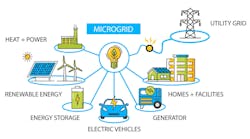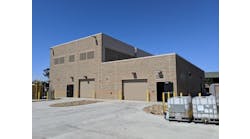When the folks who run the grid start to issue warnings about electric reliability, we all best sit up and take notice.
They are not doomsayers or advocates for specific technologies, but the technicians who run the regional transmission organizations. They are tasked with the engineering challenge of ensuring that electric supply always meets demand.
This is the time of year that they release their winter reliability forecasts. Most years, these reports take on a tone that says, “We got this.” This winter, however, it’s more, “We hope we got this,” or “We’ve got this … for now.”
Their caution isn’t surprising given the unexpected wallop Winter Storm Uri brought to the Texas grid last winter. The February freeze left two out of three Texans without electricity and 210 people dead. Just a few months before this near total collapse of the Texas grid, its grid operator had said: “We studied a range of potential risks under both normal and extreme conditions, and believe there is sufficient generation to adequately serve our customers.”
Texas’ deep freeze wrote the script in 2021 for those who endorse more microgrid development, a story underscored by the wildfire-related power shutoffs in California and Hurricane Ida’s toppling of transmission and distribution lines in Louisiana.
What can we expect next? As grid operators lay out their forecasts for winter 2021/2022, they speak of potential fuel shortages, climate change uncertainties and supply chain woes.
New England in “precarious position”
ISO-New England (ISO-NE) is pulling no punches. In a news release issued Monday, the grid operator for most of the six-state region, said that harsh weather could put the region’s power system in a “precarious position” this winter.
New England has been plagued for years by natural gas constraints when extreme cold persists. During these freezes, power plants vie with homes for fuel. Homes, which need fuel for heating, get first priority.
In recent years, the region has turned to oil and liquefied natural gas as alternatives. But those two fuels could be in short supply this winter, too.
“Higher prices globally for these fuels, as well as pandemic-related supply chain challenges, could limit their availability in New England if needed to produce electricity this winter. The region would be in a precarious position if an extended cold snap were to develop and these fuels were not available,” said Gordon van Welie, ISO-New England’s president and CEO.
The good news is that the National Oceanic and Atmospheric Administration (NOAA) expects a warmer than average winter in New England. The bad news is that NOAA had also predicted warmer than average weather for Texas last year.
As ISO-NE points out, “A warmer than average season does not eliminate the threat of prolonged stretches of cold weather. Climate change is making weather more volatile and harder to predict, while stimulating more severe weather.”
If power reliability comes under threat, ISO-NE will take several steps to keep electric supply and demand in balance. (That’s crucial because if an electric grid goes out of balance it can collapse, and efforts to restore it could take days, weeks or months.) To avoid this, and as a last resort, ISO-NE would impose controlled power outages, as Texas’ grid operator did during last winter’s freeze.
“Highlighting these concerns is not meant to cause undue alarm at this early stage,” said van Welie. “Rather, by identifying and sharing the conditions under which the power system would be most challenged, we hope to prepare the region that if these conditions arise, the ISO, utilities and government officials may ask for conservation of electricity and gas usage as an early step in avoiding or minimizing the need for emergency actions.”
For ISO-NE, winter fuel concerns are a source of frustration. The grid operator has been trying to fix them, to no avail, for two decades by raising concerns before state and federal agencies. ISO-NE, for example, does not have the authority to require generators to procure fuel in advance.
“These issues may limit the ability for resources in New England to replenish their tanks if they run low during the winter months. These limitations are in addition to typical logistical challenges, such as inclement weather, that can affect fuel deliveries into the region. A national shortage of truck drivers may also affect the speed at which some generators can replenish their fuel supplies, as the trucking system is shared by multiple industries, including commercial and residential heating and electric generation,” said ISO-NE.
Reliability isn’t the only worry. Energy cost risks exist, too. As economies recover from the pandemic, demand is rising for fuel to make electricity — which means wholesale power prices can take a hit.
New York sees margins thinning
The New York Independent System Operator (NYISO) offers a winter reliability forecast that is less foreboding than that of ISO-NE. NYISO said electricity supplies in the state are expected to be sufficient, even if there is a cold snap.
But in a separate report issued a few days ago, the grid operator said its margins to maintain reliability appear to be narrowing over the long term.
“The latest study demonstrates that our reliability margins are thinning to concerning levels beginning in 2023,” said Zach Smith, NYISO vice president of system & resource planning. “We have to move carefully with the grid in transition in order to maintain reliability and avoid the kind of problems we’ve seen in other parts of the US.”
The Comprehensive Reliability Plan outlines a series of risk factors for the grid, including:
- Extreme weather from climate change.
- Too much electric demand chasing too few power plants.
- Uncertainty around balancing the simultaneous rise of electrification, distributed energy and renewable energy.
NYISO is especially concerned about New York City, which it says is dependent on construction of new transmission lines. Building transmission is often a slow process. Sometimes, after years of planning, projects never happen because of public opposition.
In addition to adding more transmission, NYISO said adding more distributed energy, demand response and energy efficiency could help avert risk.
PJM readjusts approach
PJM, the grid operator for all or part of Delaware, Illinois, Indiana, Kentucky, Maryland, Michigan, New Jersey, North Carolina, Ohio, Pennsylvania, Tennessee, Virginia, West Virginia and the District of Columbia, also struck an optimistic tone.
But the grid operator added that it is undertaking new efforts in light of what happened in Texas last winter, including:
- Incorporating critical-load business rules and expectations into emergency operations procedures to assist transmission owners in identifying and prioritizing electric service for critical facilities in emergencies.
- Collecting more information from suppliers about any fuel, environmental or weather-related limitations that could impact winter operations, while also including wind and solar generators in these requests.
- Further enhancing information sharing with the natural gas industry.
About 20% of the power generated within PJM is fueled by coal, which appears to be in short supply going into winter. S&P Global has warned that coal inventories are roughly 30% lower than they were last year.
“We have been in close contact with electricity generators in the PJM footprint to better understand their fuel supply situations and that will continue through the winter,” said Mike Bryson, senior vice president − operations for PJM.
By Shutterstock.com
Electric reliability woes elsewhere in the US
In its winter reliability assessment, the North American Electric Reliability Corporation (NERC), an entity charged with minimizing risks to the grid, echoed the concerns noted by ISO-NE, NYISO and PJM and also pointed to challenges faced by others.
For the Midcontinent Independent System Operator, the Southwest Power Pool and ERCOT, peak demand or generator outages that exceed forecasts — at levels that have been experienced in previous winter events — can be expected to cause energy emergencies, NERC said.
NERC’s report also cautioned that Southern California and the US Southwest are dealing with limited natural gas storage and lack of redundancy in supply infrastructure. “As a result, electricity generators face the risk of fuel supply curtailment or disruption from extreme winter weather events,” NERC said.
In addition, hydroelectric capacity could be compromised by drought conditions in the West.
Can we even fix the grid if it breaks?
By Novikov Aleksey/Shutterstock.com
Meanwhile, the National Rural Electric Cooperative Association (NRECA), a trade association that represents 900 not-for-profit electric cooperatives, is sounding the alarm about a shortage of components to repair the grid.
“Supply chain delays are contributing to an alarming shortage of the most basic machinery and components essential to ensuring continued reliability of the electric system,” wrote Jim Matheson, NRECA CEO, in a recent letter to US President Joe Biden. “These delays mean that some electric cooperatives face impossible choices as they restore power after an outage, work to provide new service to areas under construction or upgrade existing service to ensure reliability. The compounding impact of ongoing supply chain delays, COVID-related workforce dynamics and scarcity of fuel supplies could result in significant consequences for all Americans, including higher electric bills amidst price increases economywide as we approach the winter season.”
The letter points to:
- An eight-month delay to secure three-phase transformers.
- An inability to place orders with some manufacturers because of historic backlogs.
- A one-year extension on lead time to procure substation transformers.
- A fivefold delay to acquire electrical conduits (up to 20 weeks) and a 200% rise in their costs.
- A worldwide shortage of microchips that makes it difficult to get digital meters.
All of these reports paint a troubling picture about electric reliability as we move into the winter. Will it hold up and will there be equipment to fix it?
Weather is fickle. We all hope it will be mild. Hope, unfortunately, is of little use to electrons.
Track news about microgrids and electric reliability. Subscribe to the free Microgrid Knowledge Newsletter.







